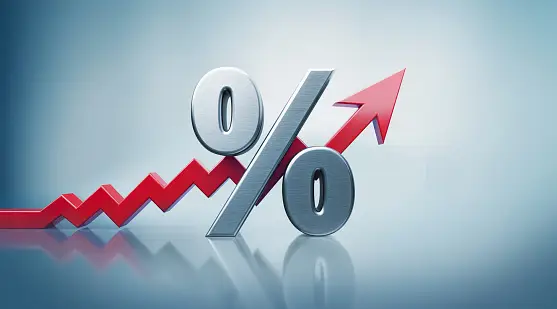Sales funnels can track leads as they become customers.
Sales funnels track leads from prospects to customers.
Examining and optimizing your sales funnel can boost sales and marketing.
The top, middle, and bottom make up a sales funnel.
This article helps small business owners and marketing managers improve their sales and marketing strategies.
Your business must attract and convert visitors, whether online or offline. It would help if you had a strong sales strategy. Most small businesses implement this strategy using the sales funnel model.
Your sales funnel guides prospects through the buying process. We’ll explain the sales funnel’s four stages, how to build one, and how it can help your business.
What does “sales funnel” mean?
Sales funnels show how customers become customers. Online or offline, the sales funnel applies. Three parts:
Top of the sales funnel: Your business’s marketing strategies attract prospects. The sales funnel begins with your storefront advertising or website landing page.
Mid-funnel sales: The middle of the funnel includes all pre-sale steps. For instance, store customers trying on clothes or website visitors reading about product benefits are in the middle of the sales funnel.
Sales funnel bottom: Purchases end at the funnel. For instance, online shoppers enter their credit card information to complete a purchase.
Do You Know?
Generate leads, research and connect with them, present to qualified prospects, overcome objections, close the deal, and follow up with customers.
What does the sales funnel look like?
From discovery to purchase, prospects go through four sales funnel stages. The four stages of a prospect’s mindset require different messaging.
AIDA helps you remember the sales funnel’s four stages:
Awareness Interest Decision Action Awareness
The first sales funnel stage is awareness.
Advertising, social media, and word-of-mouth advertising can raise awareness. Your business blog or Google search may also attract prospects.
If the timing is right, the prospect may click a link and buy your product or enter your store and buy. However, you may have to persuade the prospect to visit your store or website, or call or email you, to engage with your business.

Interest
Interest is sales funnel stage two. The prospect knows about your brand, products, and services. They’re assessing it based on interest.
At this stage, a content strategy that educates and informs prospects is essential. If you’re too pushy, the prospect may leave. Your content should show your expertise and help prospects decide.
Tip
Focus on evergreen content and use a content calendar to organize your content strategy.
Decision
Sales funnel stage three is a decision. The buyer may consider several options before buying. They’ll compare prices, packages, and other factors.
Offer your best now. You could offer free shipping, a discount code, an online coupon, or a bonus product when they order. To get a prospect to choose your offer, make it irresistible.
Content can engage customers and persuade prospects. Sales pages, webinars, and phone calls can convert prospects.
Action concludes the sales funnel. Your prospect buys your product or service or leaves without buying. Your company’s ecosystem includes customers who buy.
After the sale, the process continues. Focus on customer retention to keep customers buying. Customer retention is essential. Thank the customer for the purchase, ask for feedback, offer after-purchase support, invite them to sign up for your newsletter, or enroll them in a customer loyalty program for rewards.
Sales funnel construction: how?
Sales funnels help prospects convert. After creating a sales funnel, you can track prospects’ behavior and engagement at each stage to determine where they are and how well it works.
Many businesses and industries have different sales funnel types. Most share fundamentals. Create a business sales funnel with these steps:

Make a landing page.
Prospects often learn about your business and products on the landing page. Different users will land on your landing page. They may download an e-book, sign up for a webinar, or click a social media ad.
Your landing page should explain your business and its benefits. Strong copy on the landing page may be your only chance to impress prospects. It should also have a lead capture form to collect prospect information and demonstrate your value.
Key Takeaway
Google Forms and Microsoft Forms let you create online forms for lead capture, surveys, and payments.
Give value.
Give a prospect something in exchange for their email address. Give away a useful e-book or whitepaper.
Foster interest.
After the prospect gives their email address, nurture them with content that educates them about your offering. You should contact them once or twice a week, but not too often to bore them. Make sure content meets their needs and overcomes objections.
Conclude.
Make a compelling offer to close the deal. Offer a product demo, free trial, or discount code.
Proceed.
At this point in the sales funnel, the prospect has bought or not. Keep communicating and building relationships.
If the prospect becomes a customer, educate them about your products or services, engage them regularly to build loyalty, and provide excellent service to keep them as customers.
If the prospect does not buy, send regular emails. Use various email marketing campaigns to nurture them into customers.
Sales funnel optimization.
Sales funnels are never finished. You should constantly optimize your sales funnel and identify where you’re losing prospects. Focus on prospects’ sales funnel transitions:
Assess the funnel top: Examine all content. Is your initial content attracting enough prospects? Content should encourage prospects to click the CTA. Rework or replace content that doesn’t get CTA clicks.
Landing page evaluation: The landing page content, such as a blog post or Facebook ad, should match your offer and CTA. Do prospects trust you? Test your landing page headline, images, body copy, and CTA to see what works.
Test every offer in your sales funnel’s action stage: Compare free shipping vs. discounts. Email nurturing and other marketing campaigns: how many sales? If one offer outperforms another, use it to close prospects and improve it.
Monitor customer retention: Determine customer retention. Do customers return and buy more? Track referrals.
Tip
To calculate your customer retention rate for a given period, take the number of customers at the end, subtract any new customers, and divide that number by the number of customers you had at the start.
Sales funnel importance?
The sales funnel shows your customers’ path to purchase. Your sales funnel reveals what’s working and what’s not. Fix funnel stage issues where prospects drop out.
Understanding your sales funnel will reveal customer behavior at each stage. This knowledge allows:
Influence how prospects move through the sales funnel and become buyers.
Market to more prospects.
Refine sales funnel messaging.
Make more sales.
Sales funnel FAQs
Sales funnel FAQs.
Sales funnels vs. marketing funnels?
The marketing funnel ends in the sales funnel. The marketing funnel engages prospects from first contact to interest in your products or services. Marketing funnels generate and nurture leads. Your prospect enters the sales funnel after learning about your brand.
How do sales pipelines and funnels differ?
A sales pipeline converts leads into customers. The prospect completes each step until they buy. Sales funnels and pipelines have the same stages but are represented differently. The sales pipeline shows the current deal value, quantity, and stage. The sales funnel, on the other hand, shows sales teams how many deals have gone through each stage.
Sales funnel manager?
Sales funnel managers monitor customer journeys from attention to action and fix sales funnel leaks. The best CRM software automates sales funnel management, qualifying leads, tracking prospects’ activity at each buyer journey stage, and following up automatically. CRM software can also define the sales process, identify sales funnel leaks, and streamline the conversion process so prospects reach the bottom.
Is the sales funnel obsolete?
Depends on who you ask. Some say lifecycle marketing—customizing communications to a customer’s funnel stage—replaces sales funnel approaches. Without understanding sales funnels, you can’t tailor communications to customers’ funnel progression. Sales funnels remain relevant. Salespeople and marketers have used it successfully for decades, proving its value.
assisting clients
A good sales funnel can find and convert leads. It also simplifies the customer journey.
Ask yourself what you need to know at each funnel step as a customer. Your answers will shape customer communication and funnel optimization.




